Where are the Best Places to Hang Hummingbird Feeders?
Hummingbirds are readily attracted to home feeders, giving birders close-up views of these incredible flying jewels. The right type of feeders, number of stations and location within a yard are all important considerations.
Table of Contents
Hummingbirds
Hummingbirds, in the family Trochilidae, are a new world phenomenon. Ancient hummingbird fossils have been discovered in Germany and France, but today these remarkable birds are native only to the Western Hemisphere. Most of the more than 300 species reside in South America, Mexico and Central America, but 14 species regularly breed in North America, and another 8 are regular to occasional visitors.
Probably the most appealing of all birds, hummingbirds are often stunning in appearance, with their iridescent colors, long slender bills and rapid wingbeats. The smallest of all birds, hummingbirds are alone in their ability to fly backwards.
Hummingbirds are voracious spider and insect eaters, and often can be seen hovering in mid-air, moving sideways and vertically as they catch small insects. More well-known is their appetite for nectar, and they can be found probing flowers like honeysuckle with bills perfectly evolved for the task. They’re also easily attracted to home nectar feeders.
Feeding Hummingbirds at Home
Hummingbirds are attracted to yards that offer shaded perches, nectar-laden plants like morning glories and artificial nectar feeders. Nectar feeders are widely available, and come in a variety of designs, color and price. Some feeders are far better than others in meeting the birds’ needs, and care should be taken in selecting the best feeders. Small, single-hole feeders are less useful than larger, multi-station feeders. Feeders should also provide a perch, should have some red coloration (it is not desirable or necessary to color the food, however) and should be easy to clean and fill.
Although dry and pre-mixed liquid “nectar” is available commercially, . A simple solution of sugar and water, at a ratio of one-quarter cup of sugar to a cup of boiling water, is much cheaper than buying commercial products and is equally nutritious for the birds.
Hummingbirds are aggressively territorial, a trait that is exacerbated with the introduction of home feeders. While hummingbirds may seem to share a flowering garden peacefully, an artifical nectar feeder can create a full-blown turf battle.
Where Should Hummingbird Feeders be Hung?
Hummingbird wars can be mitigated through a number of steps. In the first place, feeders should be purchased that provide multiple feeding holes and an accompanying perch arranged in a circle around the nectar reservoir. A dominant hummingbird may still try to drive off other birds, but providing feeding stations on opposite sides of a feeder will give some of those birds an occasional opportunity. It also helps to hang multiple feeders in the yard, reducing a dominant bird’s territorial effectiveness.
Placement of those multiple feeders is critically important, as well. If two feeders are hung from a two-sided shepard’s hook, for example, a dominant bird can easily patrol both feeders, and little improvement is realized. It is far more productive to set up two single-station shepard hooks, instead, and to locate them as far apart as possible. Most yards, especially during periods of high-activity, can easily accommodate more than two feeders, and the same principle applies. Regardless of the number of feeders, each should be placed as far from other feeders as practical.
Hummingbirds also prefer to feed alone, or with other hummingbirds, so their feeders should not be placed near seed or suet feeders provided for other birds. Feeders should be hung near roosting spots, such as a tree or large bush, since hummingbirds often remain close to food sources, and leafy perches provide shade and safety. In order to observe, photograph and enjoy hummingbirds, feeders can be located in line with windows or near outdoor seating areas. Since windows pose a collision risk, feeders should not be hung against the glass (with suction cup attachments). Generally speaking, however, locating any kind of bird feeder within a few feet of a window is thought to reduce collisions, since birds often slow down approaching feeders.
The Advantages of Properly Placed Hummingbird Feeders
Hanging hummingbird feeders far from other feeders, near shaded, leafy perches and close to (but not directly on) windows and other observation spots is ideal. The birds will have safe places to retreat after feeding, territorial battles will be minimized and opportunities to observe and photograph them will be maximized.

